Our birth story.
How HypnoBirthing transformed our birth experience, welcoming a baby with a diagnosis and beginning life as a family of 3.
The number of times that I have thought about writing this down far eclipses the number of times I have physically sat down to do it. To my own credit though, in the last 12 weeks I’ve been *mildly* preoccupied sustaining a small human life. Slowly but surely and sentence by sentence, I’ve been jotting all of this down between naps, bedtimes and feedings. It’s certainly been a lesson in patience. The process of welcoming this little magical creature earth-side has forced me to truly step away from everything I was to begin to become everything that I am. I am not the same person I was before Teddy.
It’s been an all-consuming transformation. Both physically — because breastfeeding is an actual ultra-marathon — and mentally — as I’ve had to detach from the self-identifiers that have defined my ego for so long. Television Anchor and Reporter. Wife. VERY retired athlete. Those words themselves now feel like an undercurrent to the absolute tsunami-like-power of the word, “Mother.”
Identifying as “Mom” began the moment I saw the words “pregnant” pop up on that pregnancy test. A seismic shift took place in my spirit that day, knowing that everything I did from there on out was in service of creating this whole new person. But that doesn’t mean it was an easy shift. I grew him while beginning my work days at the ripe hour of 2:45 AM most days.
As the holidays turned to the dead of New England winter, and then to spring and inching ever-so-close to those iconic Boston summer days, we marched closer and closer to our July due date. I remember feeling anxious for how his arrival would impact my work and worried about how we were going to navigate city life with a baby. What if I went into rapid labor on a live location in the middle of nowhere New Hampshire? What if I’ve been up since the crack of dawn and I labor for 48 hours? What if I have to be induced because I’ve gone to 42 weeks? Plus, the Type A gal in me knew there was not much I could control here: I simply have never done this before.
And yet. There are many things that scare me on this planet. Heights. Speed. Dental procedures. Seriously, even routine teeth cleanings freak me out. The dark. Bees. Food borne illness. I have been known to obsessively clean out our refrigerator and do an expiration day “audit” every time I go to my parent’s house.
I really thought I’d add childbirth to my extensive fears catalogue. But as July became visible on the calendar, we had already undergone terrifying phone calls with genetic counselors. I’d had an amniocentesis. We had wrestled with the odds and succumbed to them — and we had already grieved a hell of a lot. The physical “birth” became the least scary unknown on my list.
When you are dealing with a diagnosis — whether for yourself or someone you love, there’s a very real cut point in time. It’s a moment when you have the “what matters and what doesn’t” epiphany. You’d be surprised how much goes in the “who gives a flying f***” column when your world flips upside down and the future unfurls itself in a way you never could’ve imagined. When I was contemplating birth, I certainly had ideals. I had preferences. I had “plan A,” and if plan A didn’t happen, I was up for any plan that took me to the end of the alphabet and got him safely into our arms.
I feel like I have to give that disclaimer for a number of reasons: 1) because I did give birth according to my plan A and I know that doesn’t always happen. I feel extremely lucky. I had amazing support. And 2) because I’m about to talk about unmedicated birth.
About 15-20 weeks into my pregnancy, I got this overwhelming gut sense that I wanted to give birth without an epidural. I don’t have a rational reason for this, it was just a deep knowing that I wanted all of my senses for this experience. I also knew that I wanted to infuse the mindfulness and meditation work that I had been doing in therapy for months (more on the power of this in another post maybe?) straight into my birth experience.
If you had told me 5 years ago that I would be writing down that I wanted to experience all of the “senses” of birth, I would’ve told you that you are absolutely bonkers and I would 100% be happily accepting any and all of the drugs available. My 20-something-year-old self would laugh and cry crunchy.
On the morning of July 14th, I went to work for a not-so-usual Sunday morning. Someone had just made an attempt on former President Donald Trump’s life at his rally the night before, and the news cycle did what it always does — latched on and stayed on the bull. I got up and went to work earlier than usual that Sunday morning.
Sidebar, because this diversion makes a difference: I went through a period of time toward the end of my pregnancy where we thought I would have to be induced due to low amniotic fluid levels. This really would’ve thrown a wrench in my birth “plan.” Miraculously, around 36-37 weeks my levels rebounded and I never needed an induction. Some may say coincidence, and my doctors all told me that the amount of water I drank would not correlate to better amniotic fluid levels.
Correlation may not prove causation, but…
In May when my fluid levels were low, I spent most of my working hours outside (and inside a news vehicle) covering the Celtics playoff run. The condition, called “olygohydramnios,” required weekly ultrasounds and an ever-present knowing that they could send me for an induction right away if the situation turned quickly. But in June, I spent most of the month inside filling in on the anchor desk and my fluid levels rebounded completely into the normal range, which allowed me to continue to progress naturally.
I reported to work that Sunday on my official start of week 39 and just felt different. My parents had come into town to help us knowing I could go into labor at any time. At the time, we were still living in our 3rd floor walkup with two big dogs and I was working *literally* up to my due date. I felt like my belly had started to drop even more (even though this baby was a low rider for the entirety of my pregnancy) and I was even hotter and more uncomfortable than usual. You know how it looks when a really overweight dog tries to go up and down the stairs? Yeah, imagine THAT walking up and down to a studio setting every half hour for 4 hours. It was so apparent that things were happening that one of our executive producers called our boss to ask what the contingency plan was “in case Sam goes into labor at work today.” Our director was betting I wouldn’t be back at work that week.
Sure enough, late Monday night into early Tuesday morning things started to happen. I won’t go into detail about the physical “stuff,” but let’s just say things were obviously moving and it wasn’t because my water broke. (Actually, my water never broke until right before I pushed him out!) I called my doulas who assured me that all signs were pointing to being in early labor and we should get excited.
That entire next day was spent lounging, trying to rest and making sure we were packed and ready to roll to the hospital when we had to go. We checked in with our doulas every 4 hours by phone and I experienced what mostly felt like cramps. Looking back on it now, I had NO idea what to expect and am so grateful I had two incredible women guiding me, because if it hadn’t been for them… I never would’ve gotten to experience birth the way that I did.
On Tuesday night, my doula who would be with me through birth — Mari — said she was coming over and would be with me until our little boy arrived. At about 7:45 PM, she showed up at our condo right around the time I was beginning to get some minor contractions. As we stood in the kitchen with the last vestiges of a dinner my mother had cooked around us, she showed me how to weather them: elongating my back, swaying my hips and breathing through them. All of the sudden our 900 square foot slice of Boston with our two dogs, a cat, my parents, Logan and me now became birth central. Mari would spend the night in our tiny living room with our massive dog watching over her. It was a completely full shoebox.
Overnight I started to experience real contractions. They were sporadic, coming about every 10-15 minutes and strong enough to wake me up. Every time I got up, Mari told me to go back to bed. I dutifully listened and mostly stared at the ceiling. We did this for a few hours, until finally around 3 AM Mari and I sat up together. I bounced on the ball, we talked life, and the vortex that would become my birth space began to materialize.
She began to time my contractions. And as the sun started to rise, the time between my contractions began to fall. Every 10 minutes. Every 8 minutes. Every 6-7. Around 9 AM — every 5 minutes. The contraction timer app told us it was time to go to the hospital. But we didn’t go, and this was always the goal. Instead, we flipped on the documentary series about the Dallas Cowboy Cheerleaders documentary, “America’s Sweethearts” and I continued to ride out the contractions to the sounds of the can can.
Early on in pregnancy as I contemplated HOW I wanted to give birth, I had decided I wanted to labor at home as long as I possibly could, simply because I knew that I would be relaxed there. I am a human who comes from a medical family. Then I married a doctor. And yet, my white coat syndrome is incredibly real.
So as the app (and my starting-to-get-concerned parents) continued to ping us that we should probably get in the car, I found myself on a yoga mat in our living room, weathering contractions in the funniest of situations. As I worked through one particularly intense surge, I moved from a child’s pose to a modified cobra as the roofers we had previously scheduled for that day walked in our front door. Said roofers immediately turned bright red upon walking into this SNL-sketch-worthy situation. And as I took what felt like my 17th warm shower of the morning, our dog walker came strolling in at her normal time while I struggled to get dressed again between contractions. While I leaned over the side of an armchair, my Dad brought me scrambled eggs. Looking back on it, the setup was a comical zoo. Or maybe more like Seaworld Orlando. And in the center was me, and it was like everyone was there for the Orca Encounter show.
Finally, around 11:30 AM, Mari told us it was time to go to the hospital. “This ride is going to suck,” she told me.
And ohhhhh did it suck. Every 3-4 minutes I felt a wave. And they always seemed to come along with a pothole. I’d never cursed those city bumps quite like this.
In triage, my OB raised her eyebrows when she told me I was 6-7 cm dilated and 80-90% effaced. I’d done a lot of the hard work already, she said. And lucky for me, a tub room was available.
OK, pause. Tub room?
One of the facets of my birth “preferences” was to be in the water as much as I could. (Told you it was like Seaworld up in there) Once we got to the hospital, we weren’t sure if a tub room would be available until we got there and asked for it. ‘Twas my lucky day.
The next hour or two is a blur for me. But I do remember a couple things: 1) I had the BEST orange popsicle I’ve ever had in my entire life. And I inhaled that thing like it was a pool of water in the center of a desert. And, 2) when I got in the tub, things took a turn for the better.
The work that we had done learning to HypnoBirth kicked in and my instincts took over. My muscles relaxed in the water. The only way I can describe it is that I felt like I was on a different plane. I could hear everyone and recognize where I was, but I existed in a place that bordered reality in a way I never have before. The beauty of HypnoBirthing, and what initially drew me to it, is that you learn to truly relax in between surges. There’s this overwhelming sense of calmness attached to the birth process and it starts with a very intentional re-wiring of how we have constructed birth in our brains. Just think about how many times movies, shows and birth stories have conditioned us to believe that birth is horribly painful. Seeing HypnoBirth in practice in birth videos we watched during classes, learning the breathing techniques and the different layers of labor allowed me to know what was coming and take the fear of the unknown out of it. I remember feeling present and confident that my body was built for this.
But, there was a part of my “back-down-on-earth” brain that also began to worry I was tuckering out. The fearful part of me worried that if I continued to labor like this for much longer, I wouldn’t have the energy to push. The moment I began to vocalize the words “I don’t think I can do this much longer,” Mari asked me if I’d like my doctor to come in and check me again.
This is where the magic of a doula comes in. In that state, you truly have no sense of what you need. All you can do is react to the physical sensations. As I’ve now learned, a really good doula sees not only what your physical laboring looks like, but she’s also listening to what you’re saying. The sounds you’re making. She knew that I was taking that transitional turn and it was probably time for us to welcome this baby into the world. My “I don’t think I can,” to her actually meant “it’s time.”
Sure enough, my OB did the quickest check to confirm. “Should we have a baby today?” she asked. And out of the tub we rolled.
I’ve done a lot of difficult physical things in my lifetime, but I would classify birth as the hardest athletic event I’ve ever finished.
Here’s the thing about not having an epidural. For me, it wasn’t about being able to say that I gave birth “naturally.” (I did use nitrous gas during the worst moments of my contractions) An epidural is very studied and very safe. There’s nothing better about doing it without one. It’s just what I intuitively believed I wanted to do and frankly, I hate big needles. In my human moments of self-doubt, I worried that I would register pain. On the other side of it, I can honestly say that DURING the birth, I didn’t feel pain. What I remember feeling was 12/10 physical difficulty. A sense of “well, I probably don’t want to do this again for a little while.” I remember feeling strain. The pain I registered was during the contractions that led to the birth. But pushing brought me the most intense sensation of relief. It was an ability to harness and redirect the most intense amount of energy I’ve ever felt in my life.
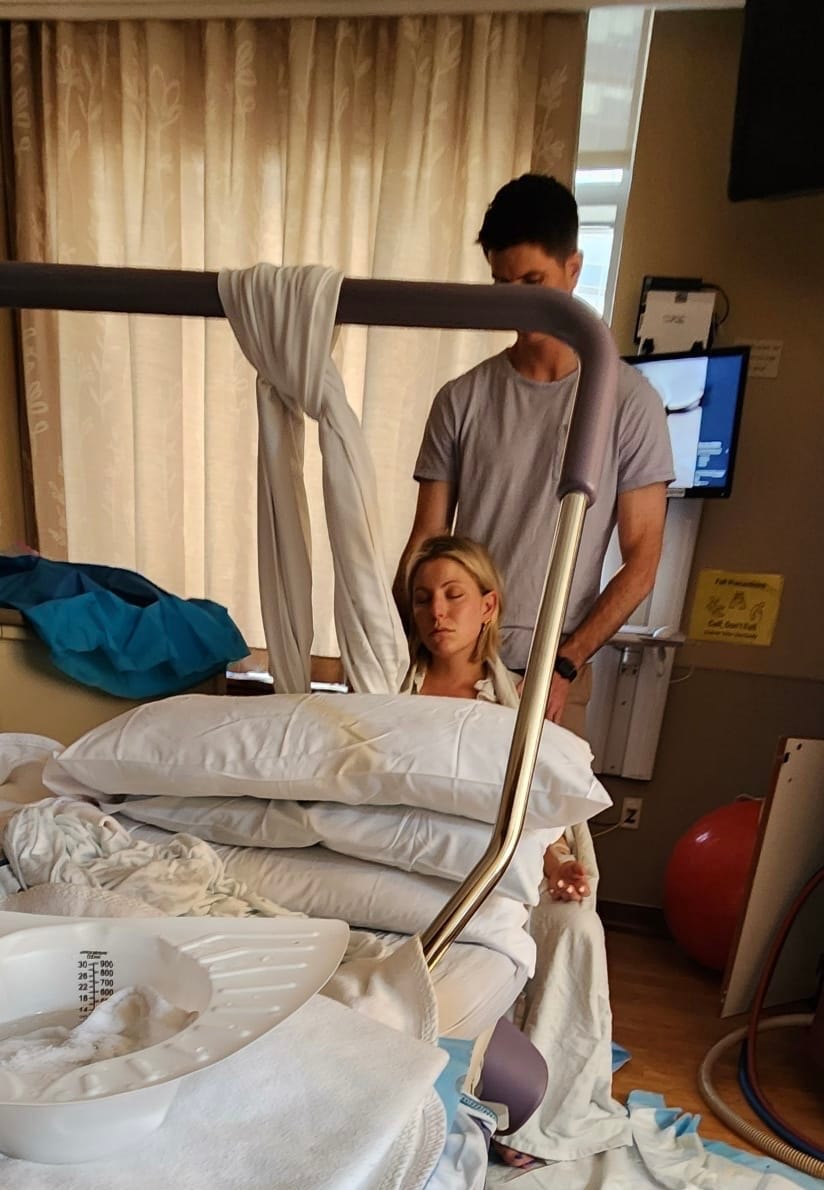
My choice to not have the epidural allowed me to make my labor and delivery room a playground. For roughly 90 minutes, I was anywhere and everywhere. I have to take a moment to highlight what an incredible birth partner Logan was. He bought into our method and stuck with me the entire way. I would not have been able to stay the course without him. When I knew we were close, I closed my eyes and kept them shut. I focused and relied on the breathing I had learned. It wasn’t until that final coached push — with a room full of nurses, my OB, NICU staff, our doula and my husband — that I felt two tiny feet and heard my OB say, “Sam, open your eyes and meet your son!”
Theodore William Huff came roaring into our world at 4:56 PM on July 17th, 2024. All lucky number 7’s: 7 lbs, 7 oz, 21 inches long. Our Teddy. I heard him before I saw him. And I could hardly believe it when I opened my eyes to take in the absolute miracle that was our son. Brandi Carlile says it best in her song, “The Mother”:“Welcome to the end of being alone inside your mind.”
I knew instantly I would never be alone in my own mind ever again. Also probably never physically either — I love my velcro baby.
Because of our Pompe diagnosis, NICU staff was there our birth. They gave him a good once over, told us he looked great (minus some folded up ears… but I was assured this was likely a packaging situation and it would resolve itself!) and after a few hours of being monitored, we were off to our recovery room and Logan fed me the best Panera grilled cheese of my life. Yes, he dipped each bite in tomato soup for me and yes, that’s the only proper way to eat a grilled cheese.
That night is pretty fuzzy for me, but it did wind up with Teddy in NICU care. Due to some odd vomiting behavior, they were worried he could have a potential obstruction. Which — as you could imagine — would be an emergency. The night into the next day involved imaging and a lot of blood draws for a tiny little human, and it also meant that doctors took him from us repeatedly over the next 36 hours. Thankfully, it was a false alarm. Though our time with the NICU was incredibly short, I have such a renewed appreciation for NICU families and families that encounter any and all complications after delivery. I feel eternally grateful that the nurses and staff at Brigham and Women’s wanted to make sure that Teddy was 100% safe.
After two long nights in our Brigham and Women’s recovery room (and an insane Epic outage… yes, that was our day 2 in the hospital and made quite a nightmare for discharge) we made our way back to South Boston and to the beginning of our life with Teddy. If you follow along on Instagram, you know our pups are absolutely smitten with their new little brother.
We have done a lot in these last 12 weeks to understand the baseline for Teddy’s diagnosis. But to be perfectly honest with you, we still don’t know a lot. Doctors initially took Teddy’s enzyme levels in the hospital when we were dealing with the potential obstruction, and due to it being so close to his birth, his enzyme levels looked normal. Our genetics team assured me that was because the testing likely showed my enzyme levels mixed with Teddy’s right after birth. His newborn screening had already returned a positive diagnosis for late-onset Pompe Disease, so there was no doubt about whether or not he had it. Thankfully, we have known about his Pompe diagnosis since I was about 18 weeks pregnant. Let me take one more opportunity to urge you to do your homework on your own genetics. It made a world of difference for us as we navigated this first pregnancy and our own digging into the world of Pompe research. Third time’s the charm with Teddy’s enzyme labs, as his second set wound up in a lab mixup. Now — with the accurate readings in our hands — we can meet with his genetics team at Boston Children’s again and make a game plan.
I find myself thinking about his diagnosis mostly at night, as he’s feeding for the last time before he goes to bed. The lights are low, the lullaby playlist is bumpin’, and I catch myself staring at his sweet, sleepy face in the dark just trying to memorize every part of him at this moment in time. As I run my fingers across his fuzzy head, I wonder how we’ll talk to him about Pompe. I question what I’ll tell him when he’s old enough to understand. I question whether we will undergo IVF when we’re ready to try again. In a weirdly irrational and guilt-ridden way, it feels like cheating. The fact that Teddy could be our only child to walk this path when it was never his choice to begin with feels like skirting the system. As I write this down, I recognize that’s not a rational thought and none of this was ever our fault, but there are times when the nighttime spirals storm me by surprise.
But most days, we forget. We watch him grow and hit milestones. He’s now smiling and babbling at us and everything he sees. Soon he’ll be rolling over and his newborn clothes are already in storage. He’s about a breath shy of a belly laugh and is already basically swimming in his tiny bath tub. There are times when he locks eyes with us and smiles that I can’t help but fight back misty eyes, knowing all that we went through and feared ahead of his arrival. But here he is. Strong, perfect and divinely made.
If you’re a family with a diagnosis or navigating genetics unknowns, we’d love to hear from you. Meeting and talking with people who are in our shoes has made all the difference — and the more we can support others, the more we will feel like our story is part of a bigger picture. Sending you all love and light.

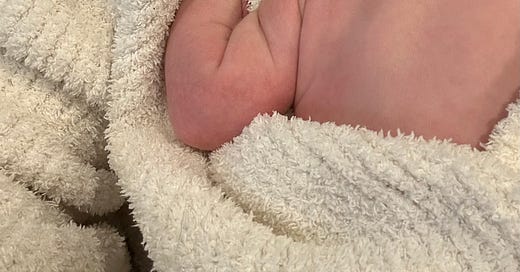



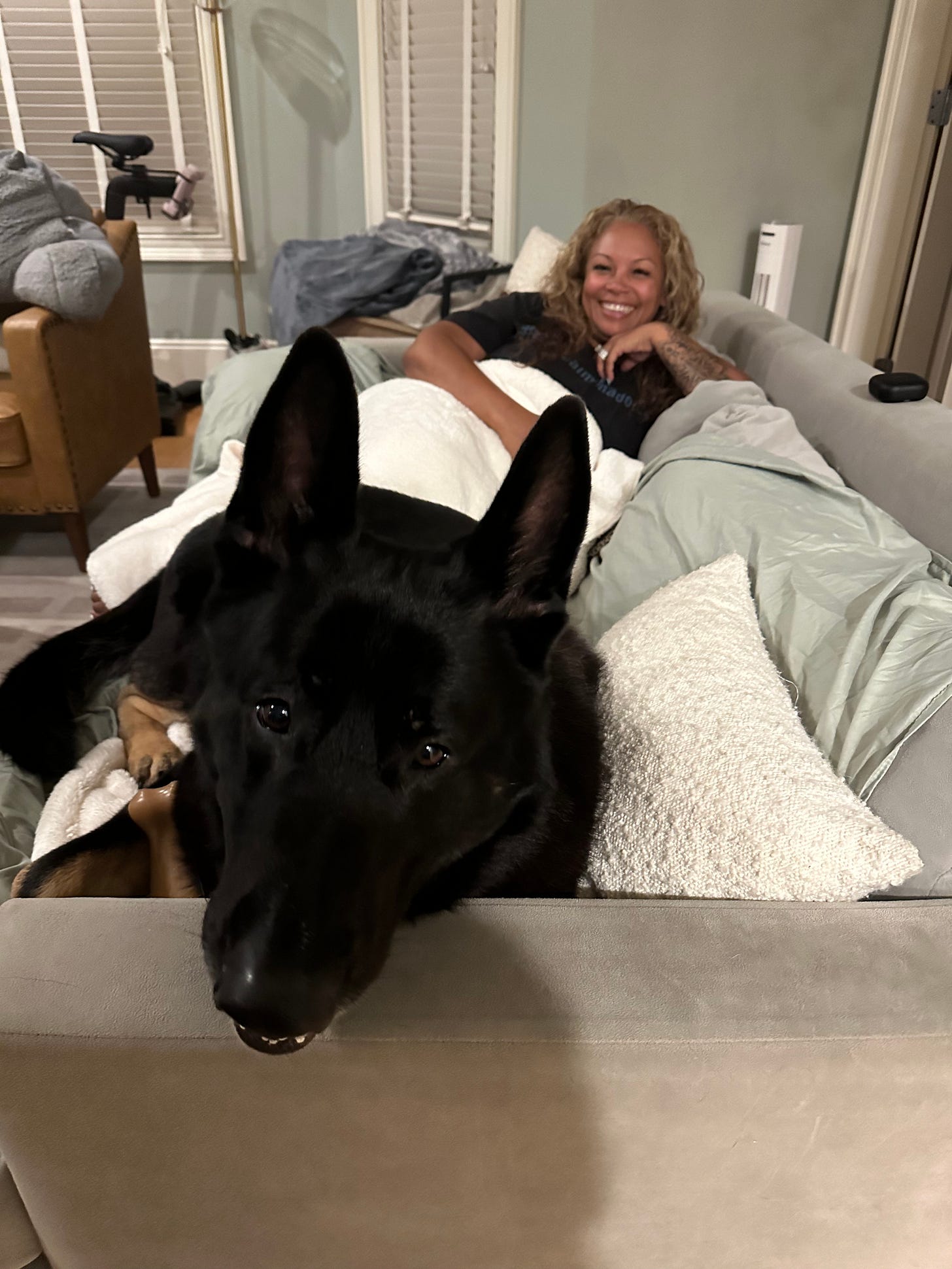
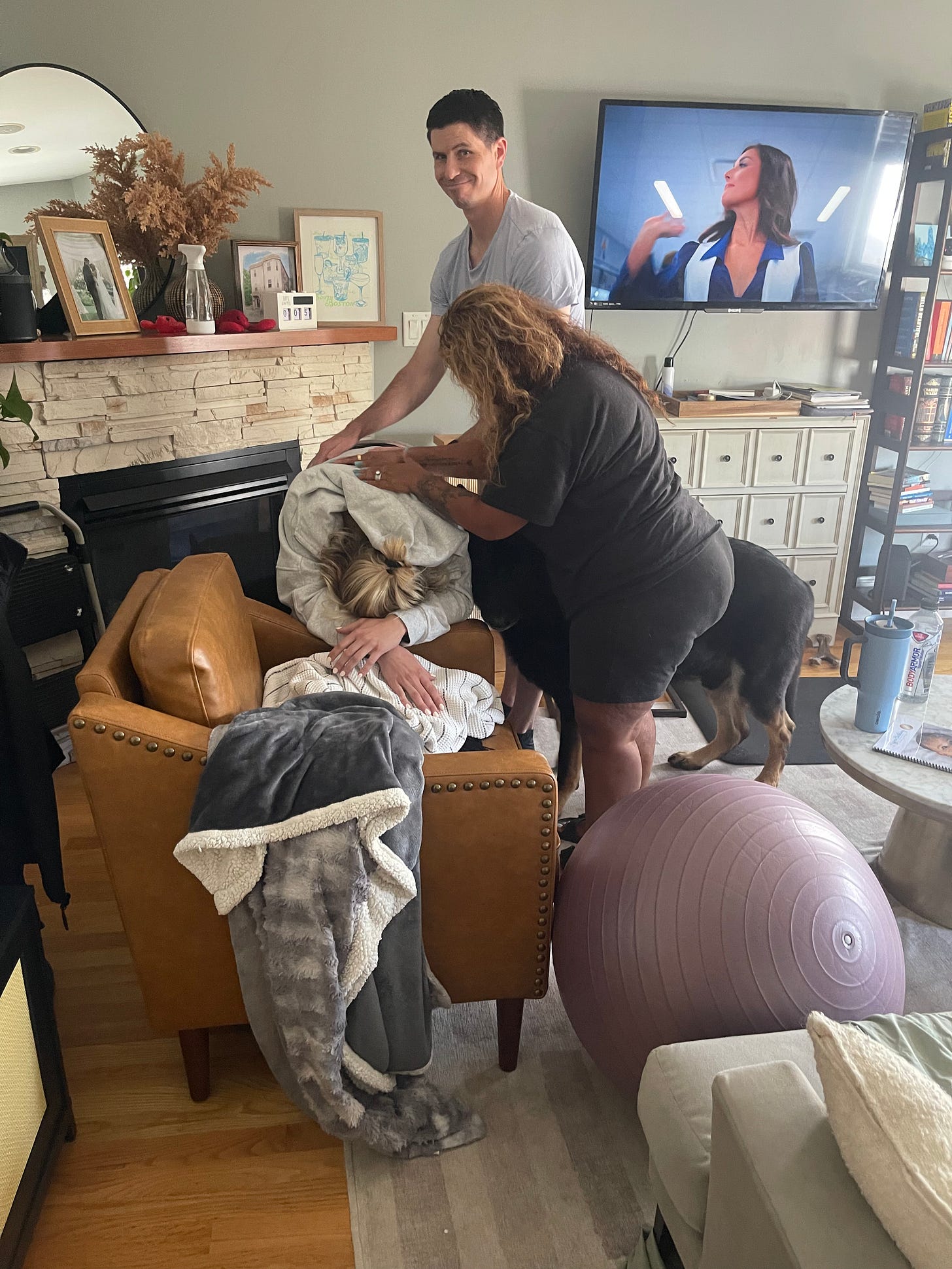
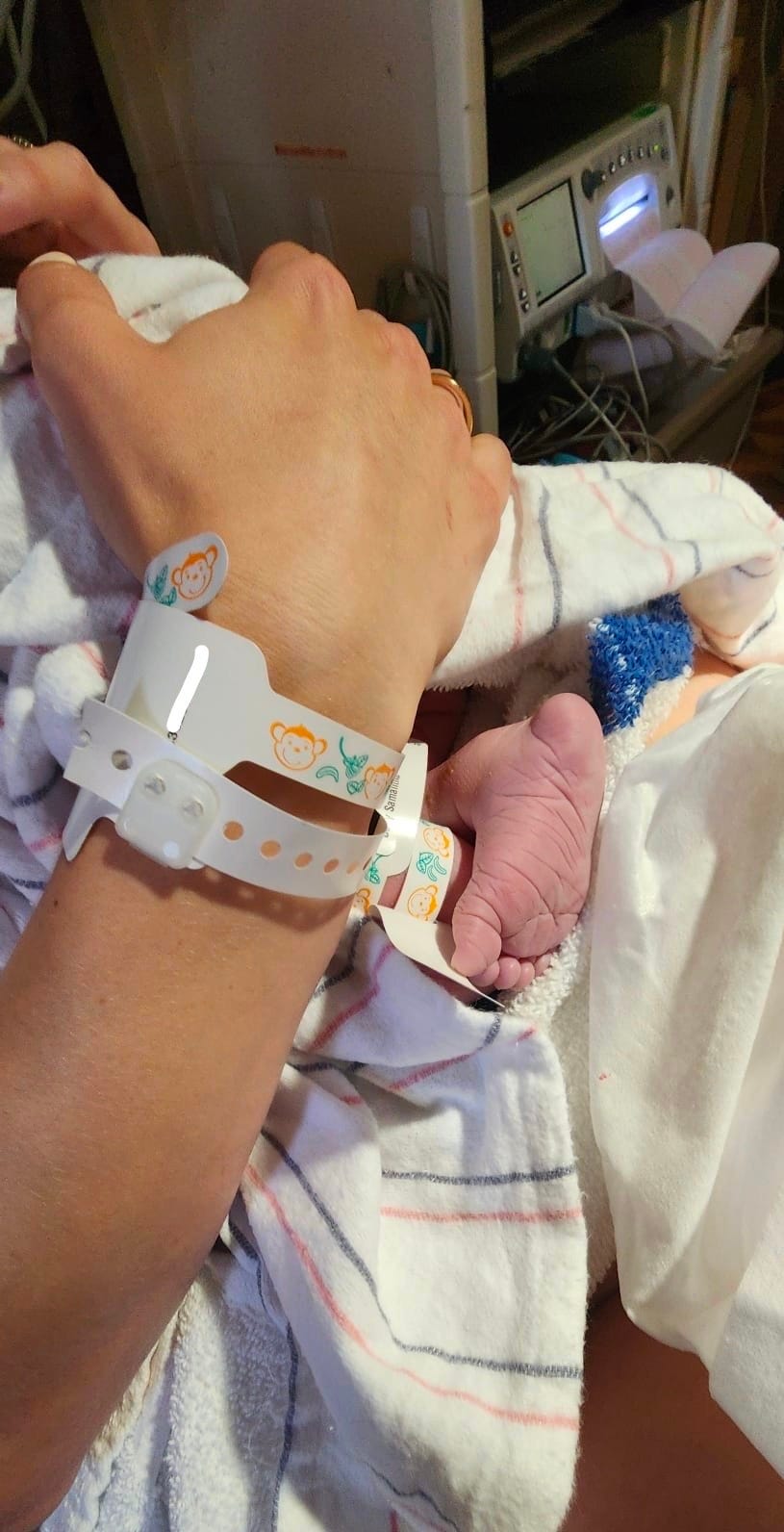
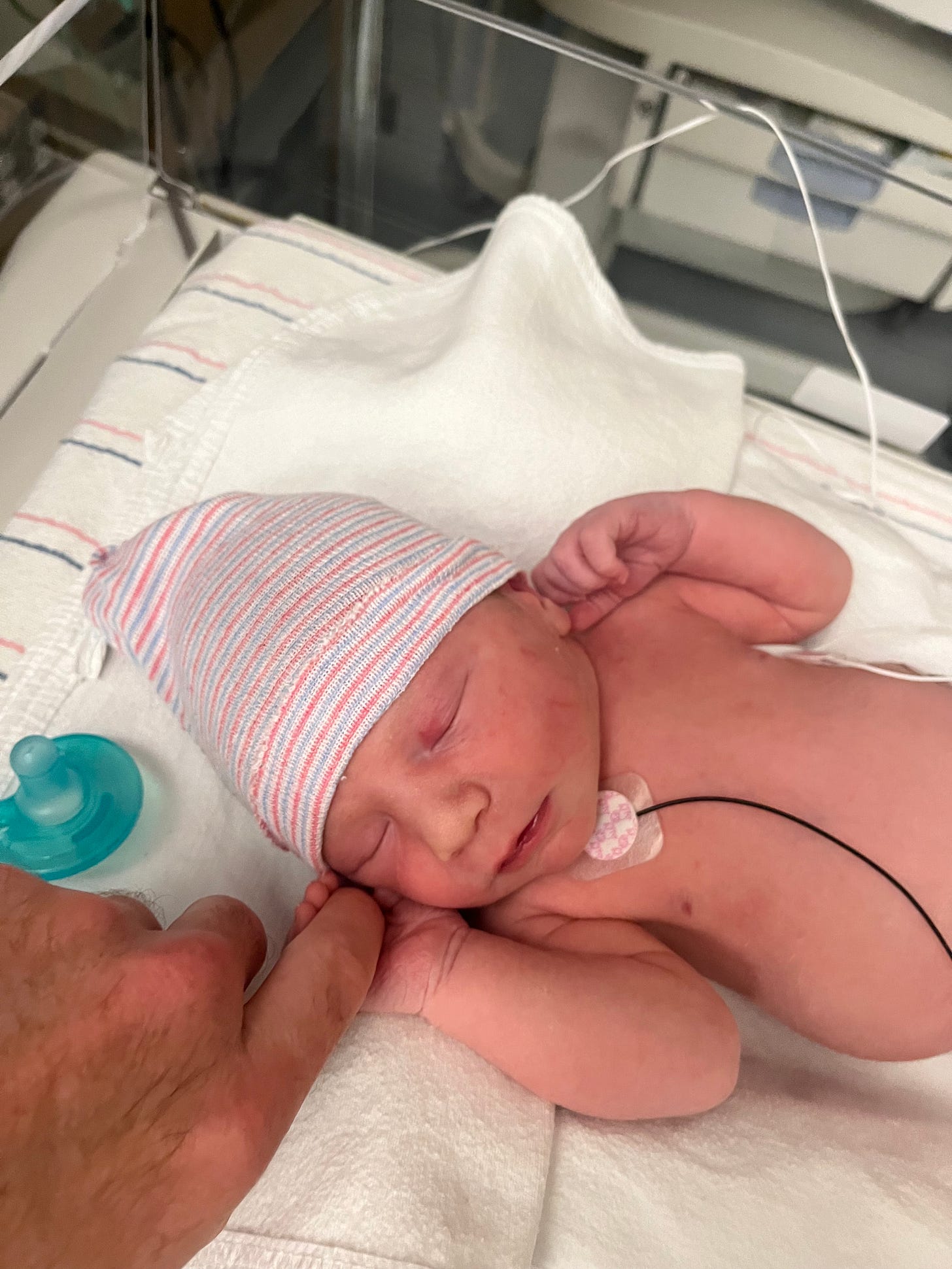
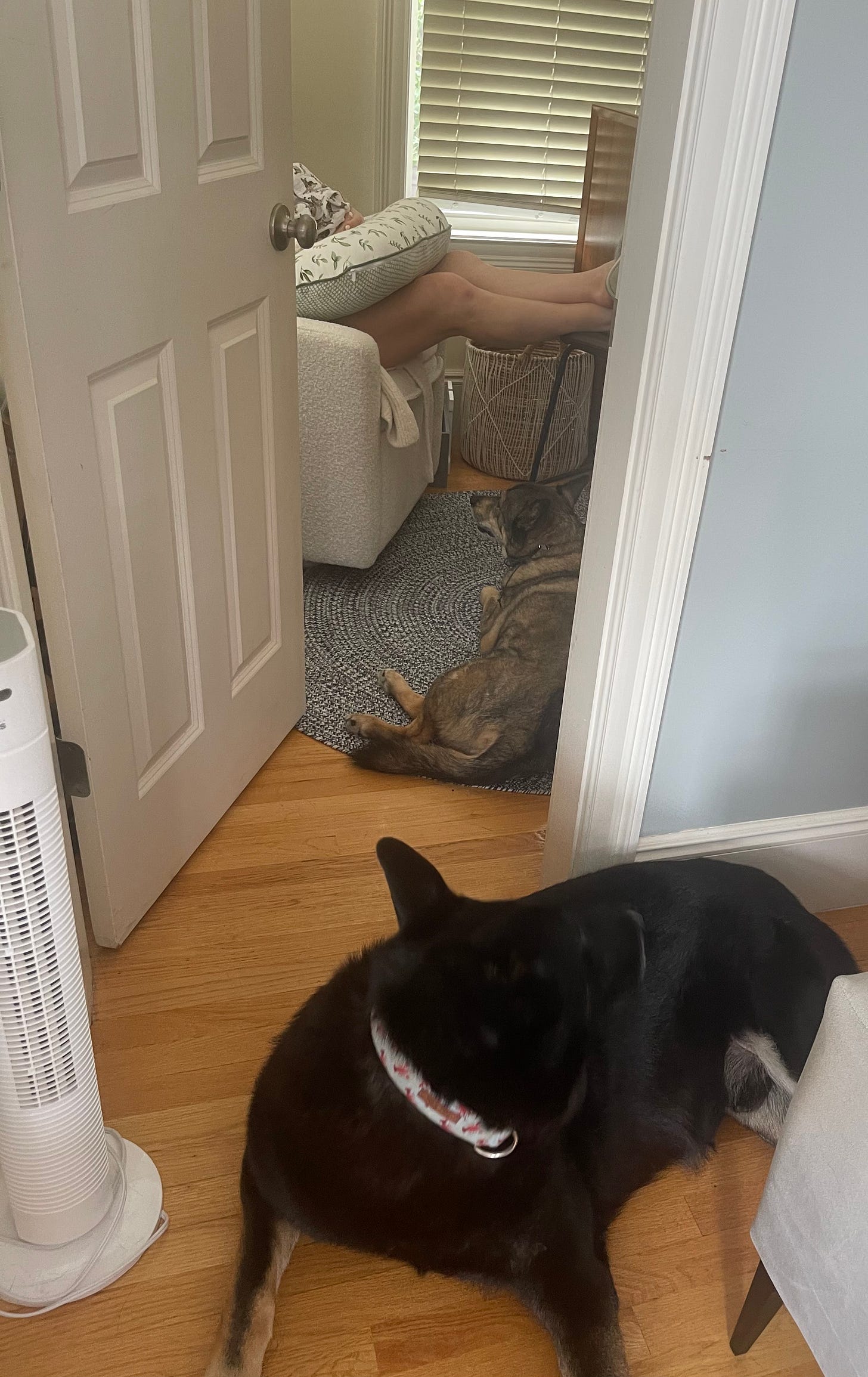

Thank you for sharing your family’s story. Teddie is adorable and he’s lucky to have such loving parents. Wishing you all the best and praying for a cure for Teddie.